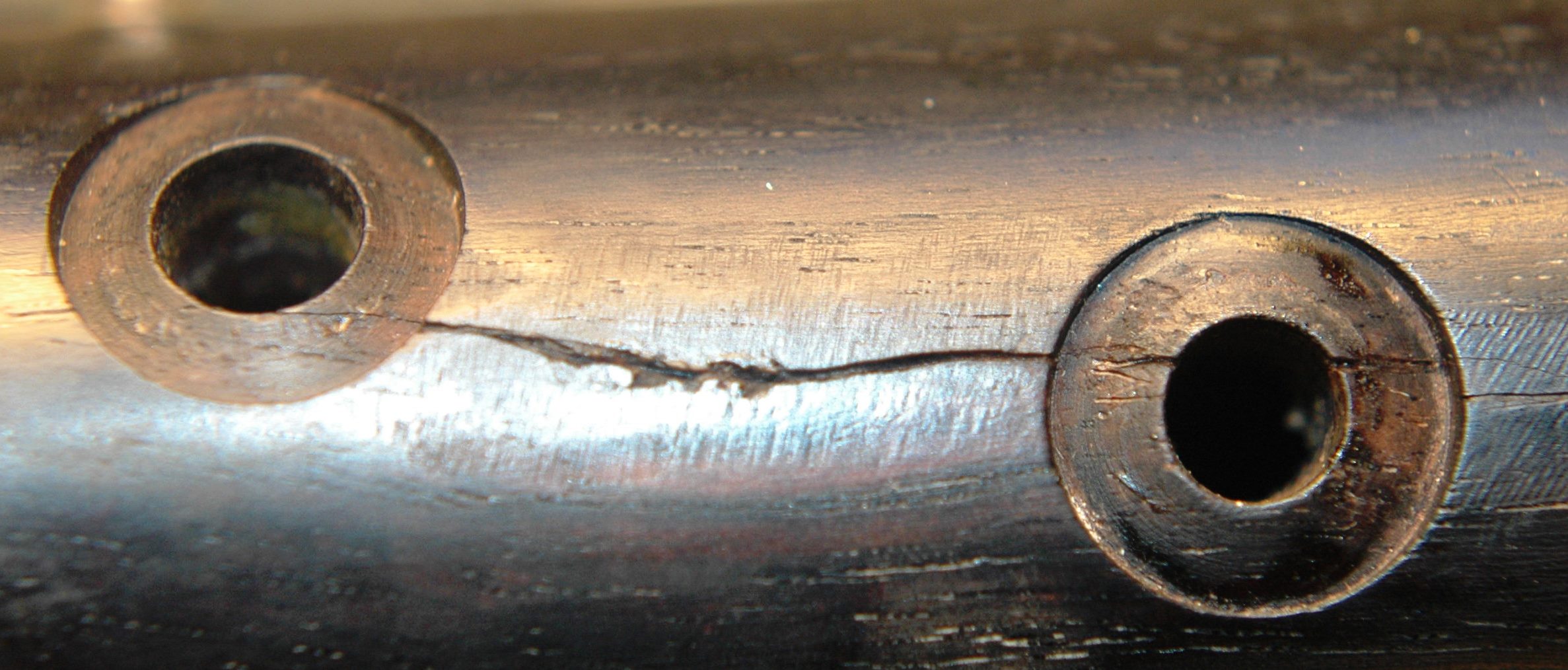-
Lohff & Pfeiffer
About Lohff & Pfeiffer
Iimprint
Contact
Newsletter
Location
L&P team
- Instruments
General
Trade options
About clarinet
Search specific instrument
Ab-clarinet
Eb-clarinet
D-clarinet
C-clarinet
Bb-clarinet
A-clarinet
Mozart basset-clarinet A
G-clarinet
Bassethorn F
Alto-clarinet Eb
Bass-clarinet
Contraalto Eb-clarinet
Contrabasse Bb-clarinet
German-Albert system Bb
Reform Boehm A & Bb
Peter Bastian Instruments
Plateau clarinets
Quartertone clarinet
- L&P Optimization
Optimization
Customization
Specialities
Special Keywork
- Accessories
General
Care products
For instruments
Reeds
Tools for reeds
Straps and hand rests
- Repair
Book time
About Repair
Maintenance
Plating-Surface treatment
Pads
Padding style
Cracks
Tone hole problems
Joints
- Tips & Advice
How to..
Videos
Worldwide external information
Problems & help
Education & learning

The top 4 tone-holes are the most likely ones to have humidity cracks. .Humidity cracks
These are the most common types of cracks. When you play, you have a moist climate inside the instrument of 100% humidity and a temperature around 80 F. The humidity will enter the wood at the tenons, sockets, tone holes, and the tapered part of the bore. Since clarinets are poly-cylindrical or tapered from the barrel tenon down to the G hole, this is the area where almost all cracks occur. Water will enter the tone-hole tenon and bore section and make the wood swell from the inside. The water will only penetrate the wood a few millimeters deep but humidified wood increases in size considerably and will expand. This creates enormous tension. The outside wood, on the contrary, is dry. The pressing inner wood will finally cause the wood to crack. If the cracks are not touching any tone-hole they are just surface cracks, going only a few millimeters deep and have no acoustical effect. They are just optical irritations and need to be glued, cleaned, and polished. Don't oil or grease them. Just put a piece of tape over them and get it fixed when the time allows. If a tone-hole is affected, the instrument will leak and become very unreliable. Check out the article about tone-hole cracks. Be aware that some of these cracks are hard to detect because they are placed just underneath the top side trill keys.
Don't get the instrument pinned under any circumstances!!! Pinned cracks
Help us to get better
Was this article helpful?
Comments, additions or questions are always welcome at: info@clarinet.dk(C)2011 - by Lohff & Pfeiffer USA-6220 Rhode Island Ave-Riverdale Park MD 20737 - USA - Phone: (812) 929 5556 & 415 470 6879 - info@clarinet.dk - Instruments






